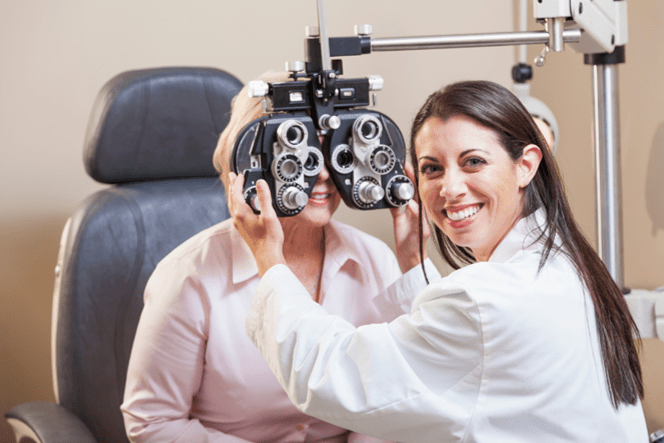
August is National Eye Exam Month, making it the perfect time to reprioritize your vision by scheduling a routine checkup.
Regular eye exams are essential not just for updating prescriptions, but also for catching serious conditions early, when treatment is often most effective. Understanding the importance of eye exams and the issues most commonly diagnosed during these visits can help you take proactive steps toward better eye health and overall wellness.
The Importance of Eye Exams
According to the CDC, about 11 million Americans over age 12 need glasses or contact lenses1. And while vision correction is a common reason to schedule an eye exam, it’s not the only reason. Many serious eye diseases can develop without obvious symptoms. A comprehensive exam can uncover these conditions before they progress, giving you the best chance to protect your sight.
How Often Should You Get Your Eyes Checked?
The frequency in which you get your eyes checked depends on several factors, including age, overall health, and risk factors. You should also schedule an eye exam anytime you experience unusual symptoms. The American Academy of Ophthalmology (AAO) recommends that all adults get a baseline comprehensive eye exam by age 40 to check for early signs of disease. After age 65, they advise having an eye exam every one to two years.2,3. People with existing eye conditions or risk factors, such as diabetes, high blood pressure, or a family history of eye disease, may need exams more frequently. Ultimately, your ophthalmologist or optometrist can help determine the best exam schedule for you.
Conditions Commonly Detected During Eye Exams
Most people associate eye exams with checking vision clarity, but that’s only one aspect of the exam. Eye doctors also examine for common conditions that can affect eye health and overall vision, such as:
- Glaucoma: Often symptomless in early stages, glaucoma damages the optic nerve and is a leading cause of blindness in adults over the age of 60.
- Diabetic Retinopathy (DR): Diabetic Retinopathy is a common complication of diabetes and the leading cause of blindness among working age adults. Like glaucoma, there are usually no symptoms in the early stages.
- Dry Eye Syndrome: This common condition occurs when the eyes do not produce enough tears, resulting in discomfort, blurred vision, and irritation.
- Age-Related Eye Changes: Conditions like presbyopia (difficulty seeing up close) naturally occur with age, which is why many people over 40 need bifocals, trifocals, progressive lenses, or reading glasses.
- Cataracts: Cataracts occur when the eye’s natural lenses become cloudy, causing things to look blurry, hazy, or less colorful.
- Macular Degeneration: This condition affects the center of the retina (macula), making it difficult to see fine details. It is largely age-related and is the leading cause of vision loss in people over 50.
Let this month serve as a reminder that regular eye exams are a vital part of your annual healthcare routine. Many vision issues may not show symptoms until they’ve already affected your sight. Don’t wait until it’s too late—stay ahead of potential problems by scheduling routine eye exams.
References: